Text
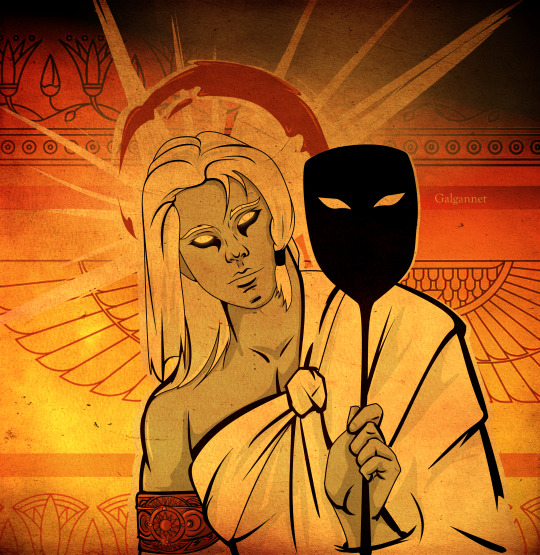
My interpretation of the Solar Eclipse. The next one will be August 12, 2026, this is a reason to go to Spain.
Glory to the great and wonderful Lord Ra!
#Gods of Egypt#ancient Egyptian religion#egyptian gods#Sun disk#shadow theater#shadow play#Ra#Ра#боги египта#Ancient Egypt#vector art#vector illustration#Solar Eclipse#the sun#Eclipse#God Ra#Lord Ra
15 notes
·
View notes
Text
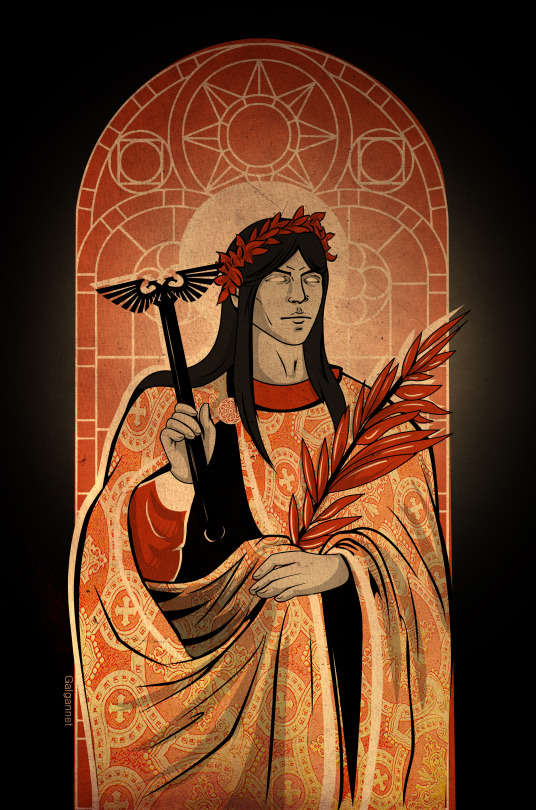
Adore the Immortal Emperor For He is our Protector
Admire the Immortal Emperor For His Sacrifice to Mankind
Exalt the Immortal Emperor For His Strict Guidance
Revere the Immortal Emperor For His Undying Guard
Venerate the Immortal Emperor For His Holy Wisdom
Honour the Immortal Emperor For His Eternal Strength
Glorify the Immortal Emperor For His All-seeing Vision
Praise the Immortal Emperor For His Unending Rule
Hail the Immortal Emperor For He is the Lord and Master
#emperor#warhammer 40k#warhammer#warhammer 40000#emperor of mankind#vector illustration#game fanart#imperium#god-emperor#shadow theater#dark art#император#бог император#император человечества#icon#Gothic#gothic art#vector art#holy emperor#image of a saint
40 notes
·
View notes
Text
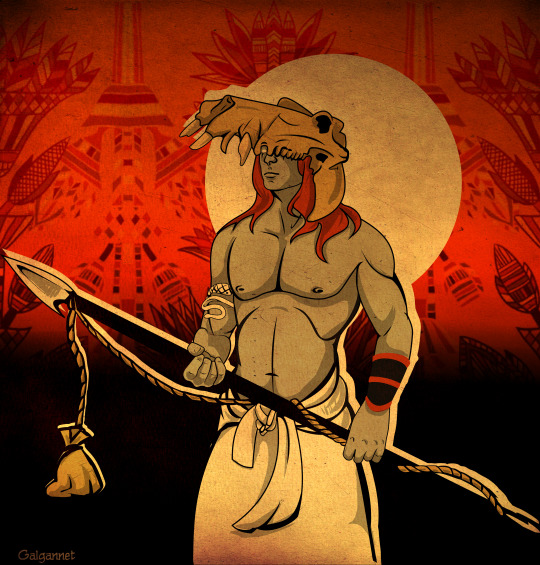
Ha
Ha was a desert deity, of fairly limited importance outside the arid regions, but of some significance in the western deserts and their oases where he was thought to provide protection from enemies such as desert nomads and invading Libyan tribesmen. The god is attested as early as the 3rd dynasty and his association with the western regions increased as time progressed. Depicted antropomorphically, Ha is recognized by the three hills of the hieroglyphic symbol for "desert" or "foreign lands" which he wore on his head. Sometimes he is depicted with a knife or bow as a symbol of his protective role, sometimes with a harpoon in his hand, with which he hit hippopotamuses. One of the oldest Egyptian gods; perhaps the first to be depicted in human form. He bore the titles “Mr. of Libya” and “Mr. of the West.”. The titles of priests of Ha have survived, but little more is known of any cult of the god.
He is associated with Set, since Set represented the west of the Nile and they both have similar attributes - the desert.
Since the west was associated with the world of the dead, Ha occupied an important role in the funerary cult. His name was often mentioned with the name of the god Igai, with whom Ha shared functions and titles.
#shadow theater#vector art#ancient egypt#ancient egyptian religion#egyptian gods#gods of egypt#egyptian god#illustration#Ha (mythology)#Ha#kemetism#egyptian mythology
18 notes
·
View notes
Photo
My beloved God.

The Emperor loves you!
DA
122 notes
·
View notes
Text
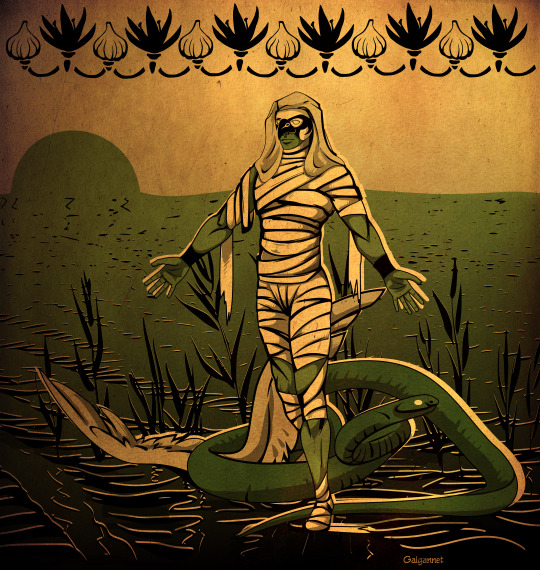
Seker (also spelled Sokar, and in Greek, Sokaris or Socharis) is a hawk or falcon god of the Memphite necropolis in the Ancient Egyptian religion, who was known as a patron of the living, as well as a god of the dead.He is also in some accounts a solar deity as for The Temple of Seker in Memphis.
Although the meaning of his name remains uncertain, the Egyptians in the Pyramid Texts linked his name to the anguished cry of Osiris to Isis 'Sy-k-ri' ('hurry to me'), or possibly skr, meaning "cleaning the mouth".In the underworld, Seker is strongly linked with two other gods, Ptah the Creator god and chief god of Memphis, and Osiris the god of the dead. In later periods, this connection was expressed as the triple god Ptah-Seker-Osiris.
Seker was usually depicted as a mummified hawk and sometimes as a mound from which the head of a hawk appears. Here he is called 'he who is on his sand'. Sometimes he is shown on his hennu barque which was an elaborate sledge for negotiating the sandy necropolis. One of his titles was 'He of Restau' which means the place of 'openings' or tomb entrances. Like many other gods, he was often depicted with a Was-scepter.
In the New Kingdom Book of the Underworld, the Amduat, he is shown standing on the back of a serpent between two spread wings; as an expression of freedom this suggests a connection with resurrection or perhaps a satisfactory transit of the underworld.Despite this, the region of the underworld associated with Seker was seen as difficult, sandy terrain called the Imhet (also called Amhet, Ammahet, or Ammehet; meaning 'filled up').
Seker, possibly through his association with Ptah, has a connection with artisans. In the Book of the Dead, he is said to fashion silver bowls and at Tanis a silver coffin Sheshonq II has been discovered decorated with the iconography of Seker.
Seker's cult centre was in Memphis, and festivals in his honor were held there on the 26th day of the fourth month of the akhet (spring) season. While these festivals took place, devotees would hoe and till the ground, and drive cattle, which suggests that Seker could have had agricultural aspects about him.
Seker is mentioned in The Journey of Ra: the myth used to explain what happens during the night when Ra travels through the Underworld. According to the myth, Seker rules the Fifth Kingdom of Night, which is called "Hidden", and is tasked with punishing the souls of evildoers by throwing them into a boiling lake.
As part of the festivals in akhet, his followers wore strings of onions around their necks, showing the Underworld aspect of him. Onions were used in embalming people - sometimes the skin, sometimes the entire onion. When just the skin was used, it would be placed on the eyes and inside the ears to mask the smell.
Also, the god was depicted as assisting in various tasks such as digging ditches and canals. From the New Kingdom a similar festival was held in Thebes, which rivaled the great Opet Festival.
Other events during the festival including floating a statue of the god on a Henu barque, which was a boat with a high prow shaped like an oryx.
#Seker#ancient egypt#vector art#shadow theater#ancient egyptian religion#egyptian gods#gods of egypt#egyptian god#Sokar#Sokaris
16 notes
·
View notes
Text

Corvus Corax
#shadow theater#vector art#illustration#Digital 2D#Illustration#Fan Art#my fanart#NoAI#Corvus Corax#primarchs#warhammer 40k#wh40k#Raven Guard#Raven#Victorian era#victorian
52 notes
·
View notes
Text
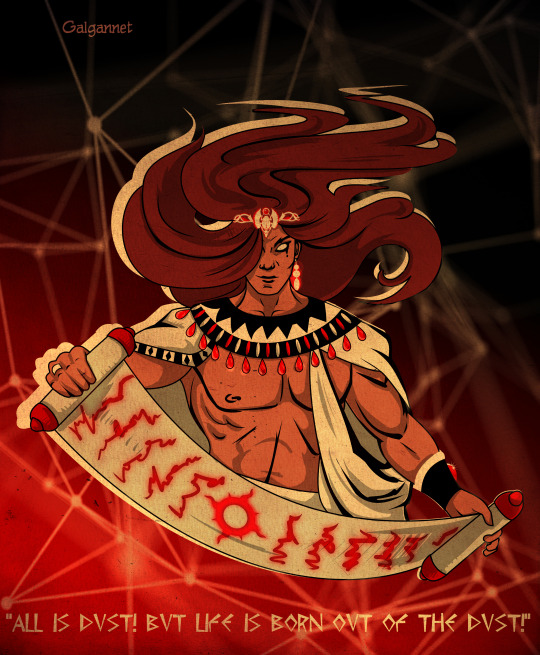
Magnus the Red
#vector art#shadow theater#Digital 2D#Illustration#Fan Art#NoAI#Magnus the Red#Thousand Sons#Daemon Prince#Crimson King#Red Cyclops#warhammer40k#primarch#sorcerer
329 notes
·
View notes
Text

Meret
In Egyptian mythology, Meret (also spelled Mert) was a goddess who was strongly associated with rejoicing, such as singing and dancing.
Meret was a token wife occasionally given to Hapy, the god of the Nile flood. Her name being a reference to this, meaning simply the beloved. As token wife, she was usually depicted with the same associations as Hapy, having on her head either the blue lotus for Upper Egypt, or the papyrus plant for Lower Egypt. Since Hapy was the source of bountifulness, Meret was usually depicted with an offering bowl, as she was seen, being his wife, as the symbolic recipient of his generosity.
Among the lower classes, where nationalism was less important than successful harvest, she was more strongly considered the wife of Hapy than the protectresses of Lower and Upper Egypt, which were more normally his wife in the upper classes. As a deity whose role was to be the symbolic receiver of bounty from the inundation of the Nile, she was strongly associated with rejoicing, such as singing and dancing.Later stories tell that Meret was the goddess of the eighth hour, in the Book of Gates.
#shadow theater#vector art#ancient egypt#ancient egyptian religion#egyptian gods#gods of egypt#goddess of egypt#богиня египта#Meret#Mert#dancing girl#Egyptian dancer#Nile
43 notes
·
View notes
Text

Khensut
In Egyptian mythology, Chensit (also spelled Khensit), which means placenta, was the patron goddess of the twentieth nome of Lower Egypt. Chensit was the wife of Sopdu and the daughter of Ra, and was depicted as an uraeus.
(Khensyt, Khensit) Khensut is prominent in the ancient city of Per-Soped (Saft el-Henneh) as the consort of its primary God, Soped. She is apparently mentioned in utterance 301 of the Pyramid Texts, an address to the rising sun, in which it is said, “You [the sun] shall raise up the king’s ka [vitality, spirit-double] for him at his side, even as this khensut-wig of yours mounted up to you.” Some have disputed a reference to the Goddess in this reference to a type of hairstyle or wig, but it would accord with other existing references to Khensut in which she is associated with the royal diadem: “Khensut who is upon the head of Re, great of decisions as Judge,” (Barguet 1950, 3). At Saft el-Henneh she is similarly “Khensut who is upon the head of Soped,” (ibid.). In an inscription from the temple of Horus at Edfu, it appears that Khensut is associated with the two plumes on Soped’s headdress, for in a passage concerning the “consecration of the double-plume” it states, “O Horus, your two eyes are given to you so that you are provided with them, O Soped, provided with your Khensut,” (ibid., 4). A reference to Khensut has also been alleged in CT spells 137 and 142 (again disputed), in which she is responsible for a decree reuniting the deceased with his/her family; in the similar CT spell 134, which does not mention her by name, she is perhaps referred to as “mistress of the crowns/ornaments” (nebet khâu; alternately, “lady of appearances,” i.e., when the king appears on the throne or in procession, from the verb khâi, ‘to rise [like the sun]’, in which regard note Soped’s identification with the east and the rising sun). In her apparent association with the executive acts, so to speak, which give order to the cosmos and secure justice for mortals, Khensut may be said to battle Seth: “Khensut the Great seizes you [Seth], her flame has power over your body,” (Barguet 1950, 5). Khensut is depicted anthropomorphically, usually in the manner of Hathor, with the headdress of a solar disk between bovine horns, or sometimes wearing the plume of Ma’et.
Barguet, Paul. 1950. “La Déesse Khensout.” Bulletin de l’Institut Français d’Archéologie Orientale 49: 1-7.
Faulkner, R. O. 1969. The Ancient Egyptian Pyramid Texts. Oxford: Oxford University Press. [PT]
Faulkner, R. O. 1973-8. The Ancient Egyptian Coffin Texts. 3 vols. Warminster: Aris & Phillips Ltd. [CT]
#vector art#ancient egypt#ancient egyptian religion#egyptian gods#gods of egypt#egyptian god#египетские боги#goddess of egypt#богиня египта#shadow theater#Khensit#Chensit
17 notes
·
View notes
Text

Nehebkau (also spelled Nehebu-Kau) was the primordial snake god in ancient Egyptian mythology. Although originally considered an evil spirit, he later functions as a funerary god associated with the afterlife. As one of the forty-two assessors of Ma’at, Nehebkau was believed to judge the deceased after death and provide their souls with ka – the part of the soul that distinguished the living from the dead.
Nehebkau was ultimately considered a powerful, benevolent and protective deity. In late mythology, he is described as a companion of the sun god Re and an attendant of the deceased King. As he is so closely associated with the sun god, his name was evoked in magical spells for protection. His festival was widely celebrated throughout the Middle and New Kingdoms.
#gods of egypt#egyptian god#egyptian gods#египетские боги#ancient egyptian religion#ancient egypt#vector art#god of egypt#Nehebkau#Нехебкау
69 notes
·
View notes
Text

“the chancellor of the king of Lower Egypt, the sole friend, the great superintendent Khenti-Kheti.”
Khenti-kheti (also spelt Chenti-cheti), was a crocodile-god, though he was later represented as a falcon-god. His name means "foremost retreater".
At earlier times, he was the crocodile god of the region called Athribis in Lower Egypt. This is why, in Egyptian history, he has often been associated with Sebek and is said to be The Owner of Athribis. However, during the New Kingdom, he was shown to be related to Horus and was shaped like a hawk. At that time his name was Horas Khenti-Kheti.
He could take the form of a giant black bull, named Kemwer.He was later replaced by Osiris, also known as "Osiris, who lived in Athribis".
He may have vaguely contributed to creation in some way. He could be the God of Indecisiveness.
#vector art#ancient egypt#gods of egypt#egyptian god#ancient egyptian religion#egyptian gods#египетские боги#Khenti-Kheti#Chenti-cheti#bull#falcon#crocodile#scribe#Кхенти-Кхети
6 notes
·
View notes
Photo
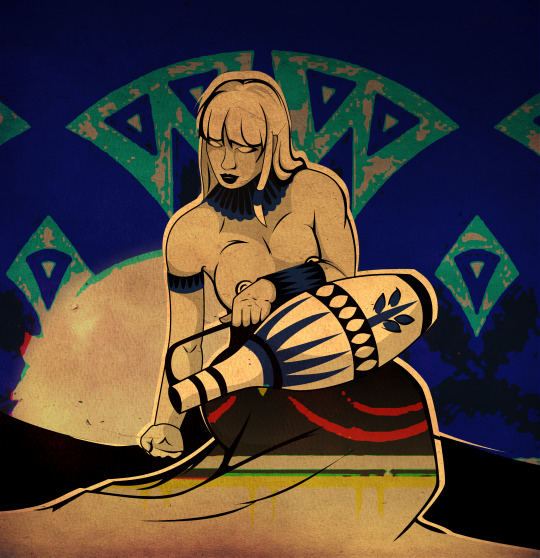
Iabet (Iabtet, Iab, Abet, Abtet, Ab) is a goddess in Egyptian mythology, counterpart of Imentet.
She is a cleanser of the Sun god Ra, and goddess of the east. Her main husband is the fertility god Min. She was worshiped in Panopolis, with her husband.
In the Amduat, Iabet is depicted as a woman with her arms by her sides, under the name of Iab. Along with eleven other goddesses, including Isis and her grandmother Tefnut, the group was known as "Those who give praises to Ra as he passes over Wernes".
#Gods of Egypt#ancient Egyptian religion#egyptian gods#Ancient Egypt#vector art#goddess of egypt#Iabet#Abtet#иабет#древний египет#египетские боги#богиня египта#египтянка#egyptian#egyptian woman#кеметизм
18 notes
·
View notes
Photo

Sopdu (also rendered Septu or Sopedu) was a god of the sky and of eastern border regions in the religion of Ancient Egypt. He was Khensit's husband.
As a sky god, Sopdu was connected with the god Sah, the personification of the constellation Orion, and the goddess Sopdet, representing the star Sirius. According to the Pyramid Texts, Horus-Sopdu, a combination of Sopdu and the greater sky god Horus, is the offspring of Osiris-Sah and Isis-Sopdet.
As a god of the east, Sopdu was said to protect Egyptian outposts along the frontiers and to help the pharaoh control those regions' foreign inhabitants. He was referred to as Lord of the East, and had his greatest cult centre at the easternmost nome Lower Egypt, which was named Per-Sopdu, meaning place of Sopdu. He also had shrines at Egyptian settlements in the Sinai Peninsula, such as the turquoise mines at Serabit el-Khadim
#Gods of Egypt#ancient Egyptian religion#egyptian gods#Ancient Egypt#vector art#egyptian god#Sopdu#Septu#Sopedu#собду#сопду#септу#воин#египетские боги
22 notes
·
View notes
Photo

Ba-Pef was a minor underworld god in Egyptian mythology. A God of Woe and Dread. Ba-Pef means "That Soul", and the demonstrative adjective "pef" has an indication of dread or hostility. This is an old deity, as we learn from the Pyramid Text that the king passes by the House of Ba-Pef where there is pain or woe. From the mastaba tomb of Meresankh III at Giza there is evidence that in the Old Kingdom Ba-Pef may have had a cult with a priesthood.
#Gods of Egypt#ancient Egyptian religion#egyptian gods#Ancient Egypt#vector art#Ба Пеф#бог египта#бог смерти#бог печали#god of death#god of dread#Ba-Pef#egyptian god
46 notes
·
View notes
Photo

Wosret
Wosret, Waset, or Wosyet meaning "the powerful female one" was an Egyptian goddess whose cult was centered on Thebes in Upper Egypt and her name was the same as the Egyptian name of the city, Waset. She was a minor goddess, but three pharaohs during the Twelfth Dynasty incorporated her name into theirs: Senwosret, or Senusret, means "man of Wosret".Wosret was rarely depicted, and no temples to her have been identified. When she was depicted, it was wearing a tall crown with the Was "power" sceptre (which was related to her name) upon her head and carrying other weapons such as spears and a bow and arrows.She was Amun's first wife (John Ray calls her "the theological equivalent of the girl next door"), and was replaced by Mut, although it is possible that Mut is simply a later name for Wosret
#Wosret#ancient Egyptian religion#Gods of Egypt#egyptian gods#vector art#Ancient Egypt#Усрет#боги египта#богиня египта#goddess of egypt
39 notes
·
View notes
Video
youtube
6 notes
·
View notes